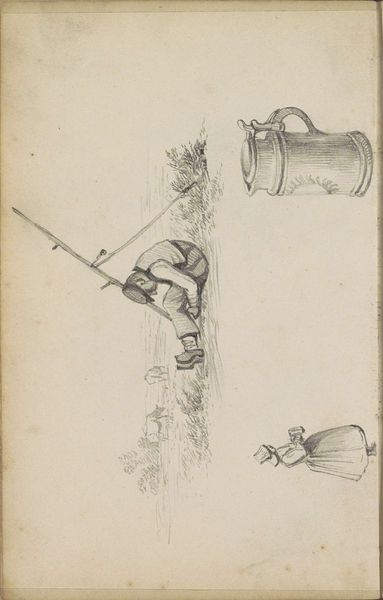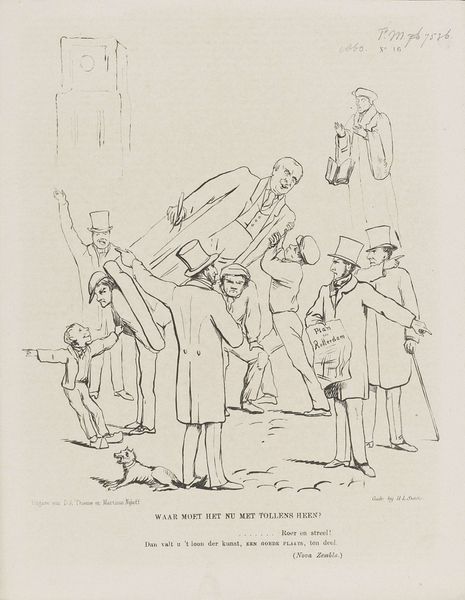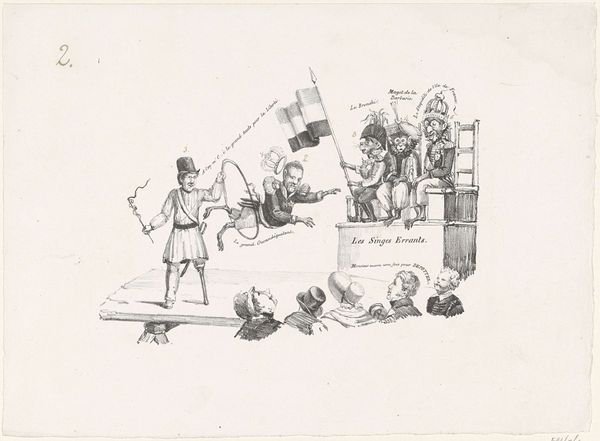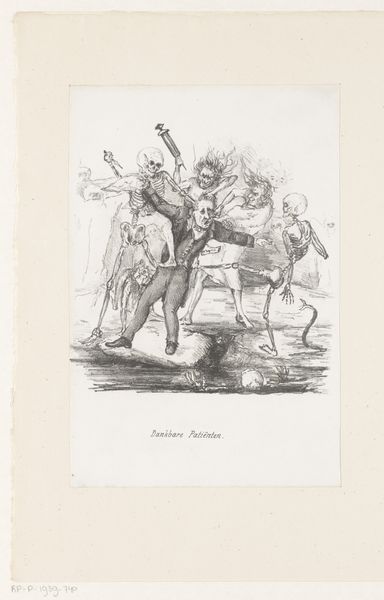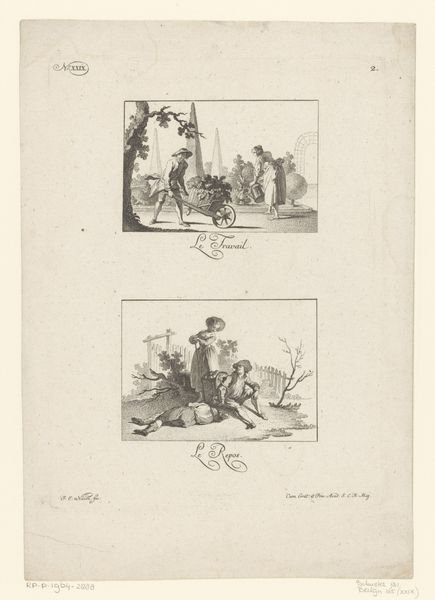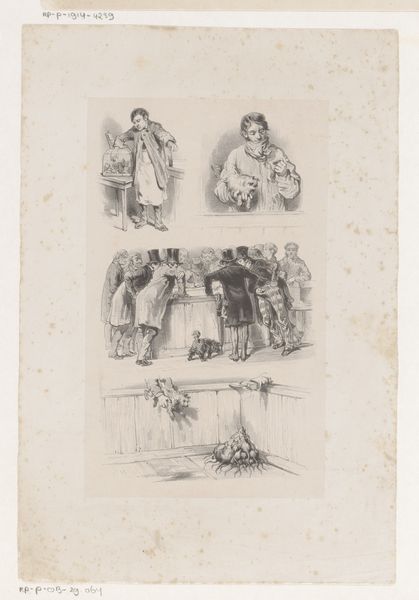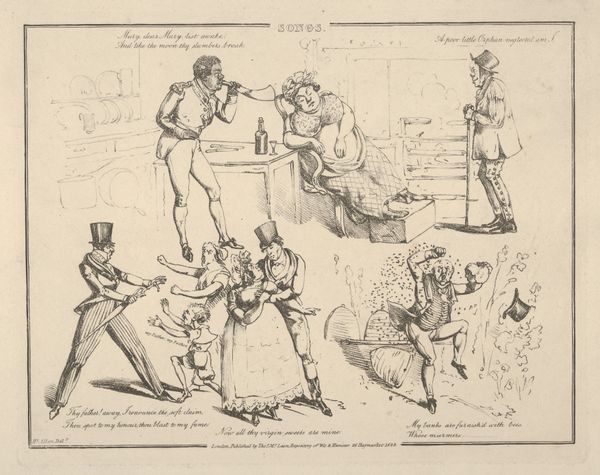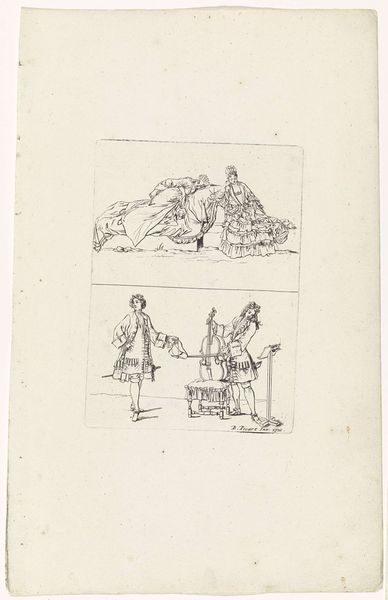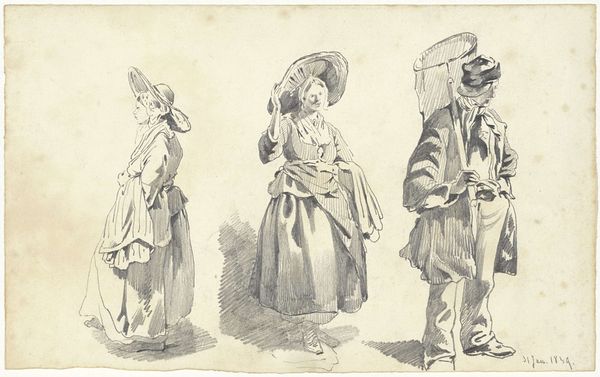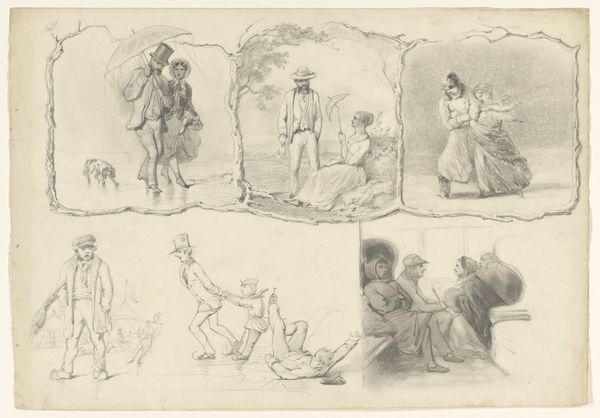
Spotprenten op de vervallenverklaring van Oranje-Nassau, 1830 1830 - 1831
0:00
0:00
drawing, lithograph, print, etching, ink
#
drawing
#
narrative-art
#
lithograph
# print
#
etching
#
caricature
#
ink
#
romanticism
#
genre-painting
#
history-painting
Dimensions: height 293 mm, width 210 mm
Copyright: Rijks Museum: Open Domain
Curator: Here we have a set of prints, collectively titled "Spotprenten op de vervallenverklaring van Oranje-Nassau, 1830," dating from 1830-1831. It’s attributed to an anonymous artist. The mediums used include drawing, lithograph, etching, and ink. Editor: My first thought is how wonderfully chaotic it is! A kind of sardonic energy jumps out at me, particularly from the upper register, but I sense it across all registers in different measures. It certainly uses materials and production in very evocative, socially minded ways. Curator: Exactly. These prints provide crucial visual commentary on the deposition of the House of Orange-Nassau. Consider the socio-political context: this piece speaks directly to the Belgian Revolution. It captures the fervent desire for independence from Dutch rule. Editor: You know, it's fascinating to consider the actual production of these prints. Were they widely circulated? Meant for a specific class of people or for a broader distribution, which then tells us how labor functions in their distribution? Curator: Given that it is reproduced via lithography and etching, methods of allowing for distribution of images and text on a relatively wide scale, and judging from its subject matter, most probably they circulated through political groups who sought regime change. Notice the figures caricatured – we can almost identify symbols representing the Dutch monarchy and their supporters being symbolically chased out, with one cartoon literally enacting that removal from a home, perhaps from their power base. Editor: And I'm drawn to the performative aspect in the bottom right. Someone on a chair, a soapbox almost, declaiming before a crowd of everyday objects – the discarded cooking pots and chairs become the populace, in a humorous fashion. And even though it may not be clear what production involved it must speak to this very moment. Curator: Absolutely. These are not just historical documents; they also present powerful emotional interpretations of a turning point in Belgian and Dutch history. The choice of caricature emphasizes the perceived illegitimacy and absurdity of the Dutch rule in the eyes of the Belgian revolutionaries. And consider the role of public opinion at that historical juncture; these prints sought to mobilize those sentiments, I would surmise. Editor: So, seeing this again, I am further impressed how materials could really underscore that message to a large segment of a population; so that they could understand exactly how social contexts would allow for the political message to arrive directly. Curator: I agree. Reflecting on this piece now, its use of accessible printmaking techniques allowed for an intimate, critical dialogue within society at the time about ideas of national identity. Editor: It really underlines how seemingly simple images carry a weighty message rooted in that cultural and material landscape.
Comments
No comments
Be the first to comment and join the conversation on the ultimate creative platform.
